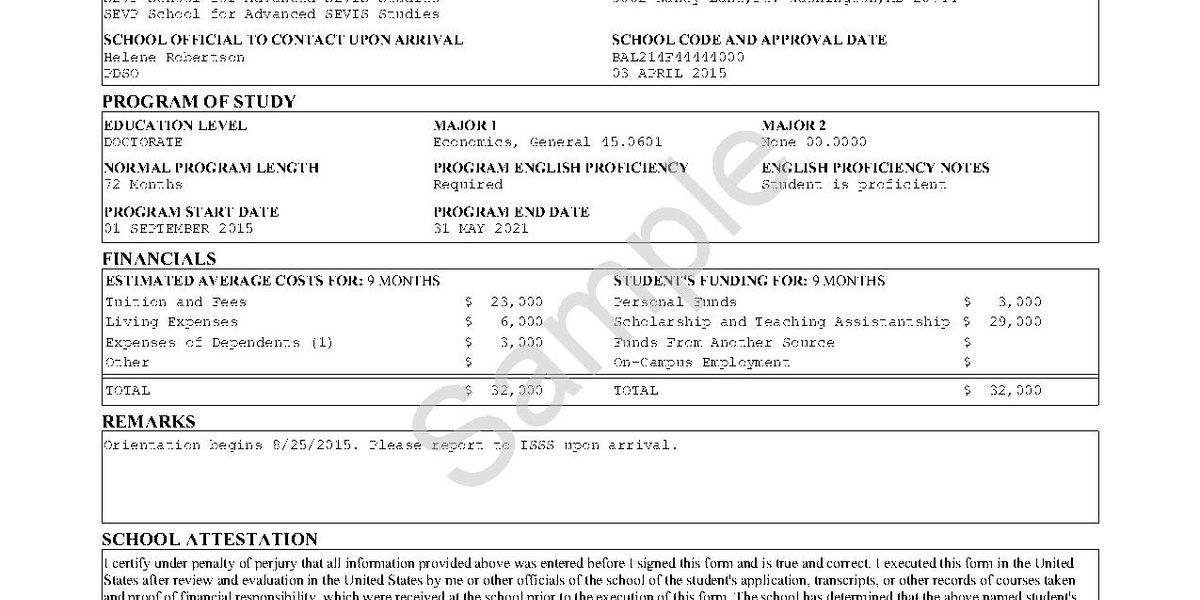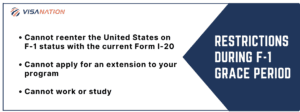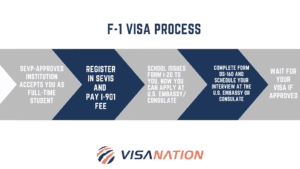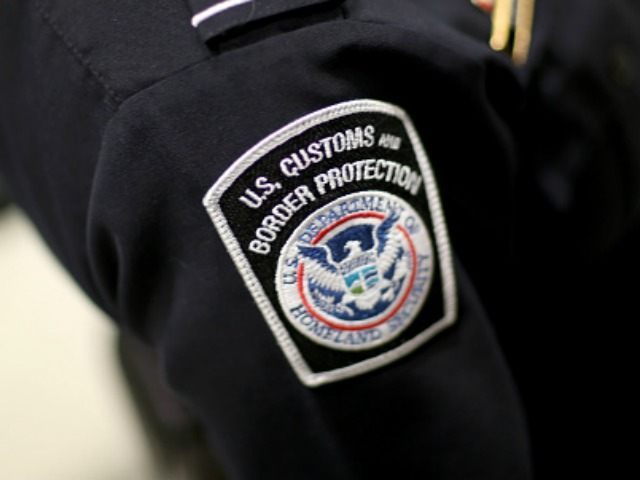F-1 Grace Period | OPT Grace Period, I-20
The F-1 visa exists for foreign nationals who want to come to the United States and enroll as full-time academic students at an accredited university, college, conservatory, high school, elementary, or other educational institution (including language training programs). Individuals interested in attending a vocational or nonacademic institution should explore the M visa program. The U.S. can admit students on F-1 visas into the country up to 30 days before the start date listed on Form I-20. At the completion of the F-1 visa program, there is a 60-day grace period. Your F-1 grace period ends when you leave the United States or “no later than 50 days after the end of the I-20 or your EAD card” if not on an OPT program.
F-1 Grace Period After OPT
F-1 visa holders have 60 days after the program or employment ends to depart the United States. For reference, M-1 visa holders have only 30 days to leave.
What is Considered the Program End Date?
The program end date is on your Form I-20, Certificate of Eligibility for Nonimmigrant Student Status. The final date you can stay in the U.S. is the “admit until” date on your Form I-94 Arrival/Departure Record. By law, you cannot enter and leave the U.S. during your grace period. Once you leave the U.S., your grace period terminates.
Restrictions During the F-1 Grace Period
The following are restrictions during the grace period:
- You cannot reenter the United States on F-1 status with the current Form I-20
- Cannot apply for an extension to your program
- Cannot work or study
These restrictions also apply to periods between your program’s end date listed on Form I-20 and the beginning of your OPT employment authorization.
F-1 Visa Grace Period Ineligibility
You will not be eligible for the F-1 visa grace period if:
- You do not hold F-1 status
- Depart the U.S. before graduating
- Fail to complete your academic program
- Have been terminated/withdrawn from school
Applying for a Change of Status
Following the completion of your program, you can apply for a change of status, but the requested start date for the new status needs to be no later than the end of your 60-day grace period. Likewise, you can use the grace period to apply for post-completion optional practical training. However, USCIS needs to receive your application within the 60-day grace period.
F-1 Visa Process Overview
To get a better understanding of the entire process, here is a brief overview of the F-1 visa steps:
- SEVP-approved university/college/institution accepts your enrollment as a full-time student.
- Register in the Student and Exchange Visitor Information System (SEVIS).
- Pay the I-901 fee. Schools and exchange visitor program sponsors have the option of paying the SEVIS I-901 cost for prospective students or exchange visitors but are not required to pay the fee.
- Your school will issue you Form I-20, which confirms you’ve been accepted at the school and are eligible for the F-1 visa. After the I-20 is issued, you can apply for your F-1 visa at the U.S. embassy or consulate.
- Complete Form DS-160.
- Schedule your interview at the U.S. embassy or consulate where you live. Bring with you an unexpired passport, Form DS-160 confirmation page, application fee payment receipt, a photo that meets the U.S. State Department requirements, and Form I-20. Also, bring with you the test scores required by the U.S. school, transcripts, certificates, diplomas from past education, and proof of ties to your home country.
- Before your interview, pay the application fee, and if applicable, the issuance fee. The visa issuance fee is due after the interview if you are approved. You will find out if you are approved or denied the visa at the end of the interview.
- If approved, wait for your visa.
- Be aware that USCIS can only issue F-1 student visas up to 120 days before the start date of your course.
If you need to bring your family with you to the U.S., they can apply for an F2 visa. Note that the school must issue them a Form I-20.
F-2 Visa Overview
Dependents of F-1 visa holders can apply for an F-2 visa to accompany their loved one while they get their education in the United States. In order to be eligible you must be a spouse of an F-1 recipient; an unmarried child under the age of 21 of an F-1 recipient; have the financial resources to survive while in the United States.
Steps to Apply for F2 Visa
- The first step would be to obtain Form I-20. When the principal F-1 visa holder receives their acceptance from the SEVP-approved institution, they get a Form I-20 from the school which outlines the details of the educational program and estimated expenses. The F-1 beneficiary should make it clear to the institution that they will have dependents accompany them so the school can prepare Form I-20 for the dependents in addition to them (everyone gets their own I-20).
- The next step is to file Form DS-160 online. Once submitted, keep the confirmation page with the barcode generated on it.
- Pay the applicable visa fees. For the F-2 visa, the fee is $160. Keep the receipt. Other fees may apply depending on where you are applying.
- Next, schedule your visa interview. It is possible and actually recommended to schedule your interview at the same time as the F-1 visa applicant if you are applying together. Otherwise, they can be separate if they have already applied.
- Bring your complete F-2 visa document file with you to the interview. Discuss with your immigration attorney any questions or concerns you may have prior to the interview.
How To Work Off-Campus with an F-1 Visa
In terms of working while you are on an F-1 visa, you cannot work off-campus in the first year, but you can work on campus. After that year, you can work off-campus in the following ways:
- Curriculum Practical Training (CPT)
- Optional Practical Training (OPT) pre or post-completion
- OPT allows you to work for up to 12 months in the U.S. in a field correlated to your study discipline.
- STEM OPT (science, technology, engineering, and mathematics)
- You may request a 2-year extension in your related field. Once your extensions elapse, you need to return to your home country within 60 days of graduation.
F-1 Visa Frequently Asked Questions
Below are answers to the most commonly asked questions about the topic:
I fell in love with a U.S. citizen while on my F-1 visa. Can I get married and stay?
Getting married to a citizen or permanent resident doesn’t automatically guarantee a permanent stay as an international student. You must meet specific requirements. Learn more about F-1 visas for marriage green cards.
What is a grace period?
In terms of the F-1 visa grace period, USCIS gives additional time between the end of your visa validity and when you need to depart the country.
Do I lose my grace period if I do not complete my program?
You risk losing part of your grace period if you do not maintain status or complete your study program. Your designated school official can provide you with more information on how soon you need to depart the country.
What is a DSO?
Your designated school official (DSO) is the individual who acts as the intermediary between the student, the school, and immigration agencies. They can help amend the student’s Form I-20 and register your case on the SEVIS system.
What happens if I don’t leave after the grace period elapses?
Suppose you stay in the U.S. past your grace period. In that case, you jeopardize your ability to reenter the U.S. on a different visa at a future point since immigration officials will take into account your overstay period.
Do I have a grace period if I transfer in the middle of the semester?
If you requested the transfer in the middle of your school semester, you would need to start studying at the new school without a grace period.
Can I enter and leave the U.S. during my grace period?
No, you cannot. Once you leave the U.S., your grace period ends.
Can I change my status to F or M while I am in the U.S. on another visa?
You can change. You will need to file Form I-20 to change your status to an F visa or M visa. Form-I-20 proves you’re enrolled in a study program in the U.S.
What is the I-20 expiration date?
This is the program’s end date. You have sixty days from this date as a grace period.
What type of visa should I get for a recreational study program that is short?
You may want to consider a visitor B visa if the program you are interested in is not for credit toward an academic certificate or degree.
Why was I given Form I-515A?
You receive Form I-515A Notice to Student or Exchange Visitor if you enter the U.S. port of entry without the necessary documents. The form provides you temporary entry to the U.S. for 30 days, but, in that time, you need to submit the required forms to the Student and Exchange Visitor Program; otherwise, you will need to leave the U.S.
What is a SEVP-approved school?
This means the Department of Homeland Security certified the school to enroll international students on F visas. You can use the DHS School Search Map to find a SEVP certified program. The tool allows you to search by location, school name, education, etc.
How soon before my program begins can I enter the U.S.?
You have 30 days before the start date to come to the United States. Therefore, you must report to your school officials by the date listed on your I-20.
What is the grace period for F-1 students?
There is a 60-day grace period at the completion of the F-1 visa program. Your grace period ends when you leave the United States or “no later than 50 days after the end of the I-20 or your EAD card” if not on an OPT program.
What does “out of status” mean?
This means you violated your status in some way. If you are an F-1 or M-1 visa holder, this can happen due to working without an OPT extension or switching schools or programs without the consent or notification of the USCIS. This comes with penalties. For F, M, or J visa holders whose programs have ended, you can file a timely application to reinstate your status to have your accrual of unlawful presence suspended while the application is pending.
USCIS defines timely as: “For purposes of counting unlawful presence, a timely reinstatement application for F or M status is one where the student has not been out of status for more than five months at the time of filing. Under the revised final policy memorandum, the accrual of unlawful presence is suspended when the F or M nonimmigrant files a reinstatement application within the five-month window and while the application is pending with USCIS.”
How can I prove my financial ability (for living expenses and education) to obtain my F-1 visa?
Consult with your immigration attorney what the best forms are to submit. Some of them might include:
- Bank statements
- Tax returns from the past three years
- Scholarship or financial aid letters
- Property documents
- Documents from a sponsor
- Documents showing annual salary from an employer
As a general rule of thumb, the government is looking more at the liquid funds you have to cover expenses.
Side note- make sure any documents you have are in English. For those that are not, you’ll need to get an official translation and attach it.
Am I eligible for financial aid as an international student?
You cannot receive U.S. government-funded financial aid, but that are cases where some schools offer financial aid or scholarships for international students. Check with the college or university directly to find out what types of plans they have.
What is the F-1 grace period for OPT?
You have a 60-day grace period after your OPT ends.
Can I work during the F-1 grace period?
No, you cannot work during the grace period.
How long can I stay in the U.S. after receiving authorized early withdrawal from my DSO?
If your DSO has granted you early withdrawal, you can stay in the U.S. for up to 15 days following the withdrawal noted in the Student and Exchange Visitor Program (SEVIS).
Can I extend my OPT grace period?
After receiving your OPT, it is possible to apply for a 24-month STEM extension up to 90 days before your current OPT authorization ends and/or up-to 60 days after your Designated School Official inputs a recommendation in your SEVIS records. Make sure that USCIS receives your STEM extension on time. Assuming that happens, you qualify for the automatic extension of your OPT for 180 days (to permit processing). Be aware that this period terminates when a decision has been made on your STEM extension.
Should I get a lawyer if I am out of status?
It is essential to seek professional help if you have fallen out of status. Since immigration law is so complex, even a minor error in your paperwork can result in additional fees and delays. The best way to ensure your status is to have your case handled by a VisaNation Law Group attorney.








